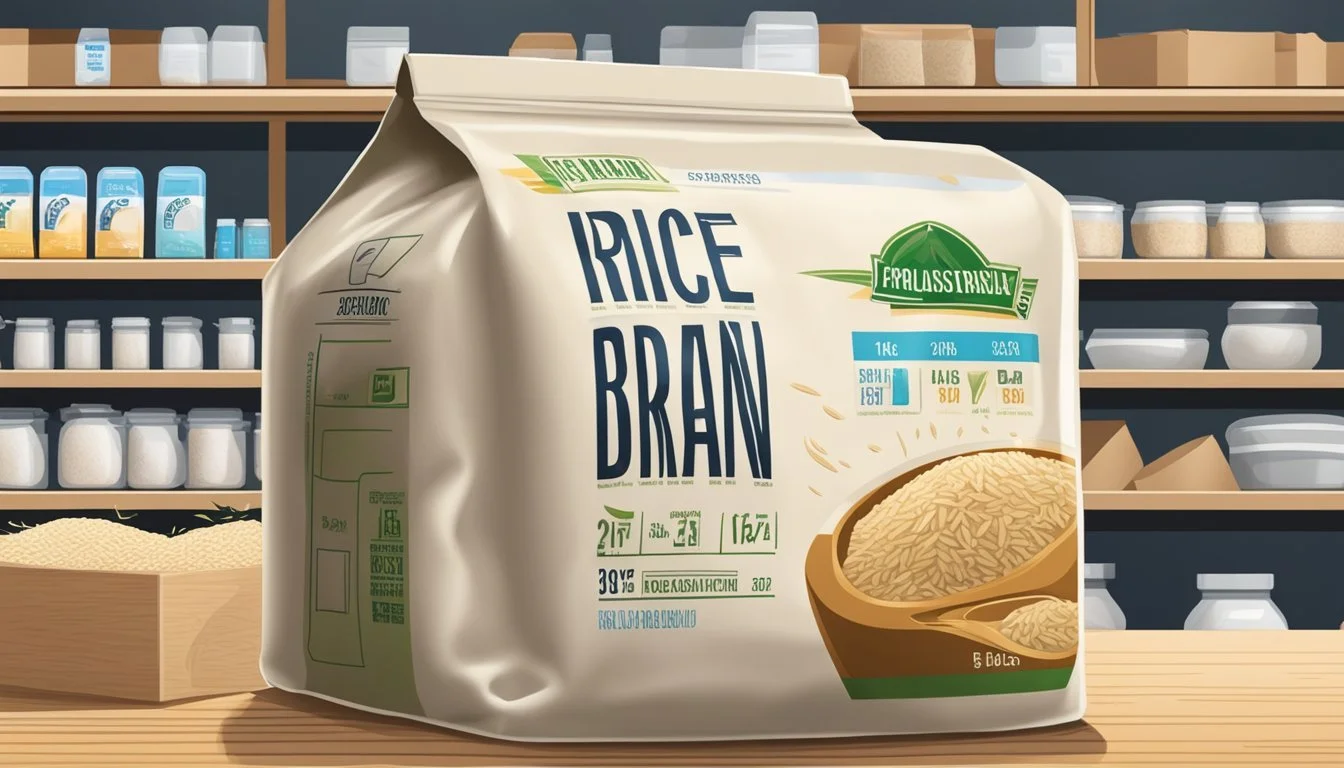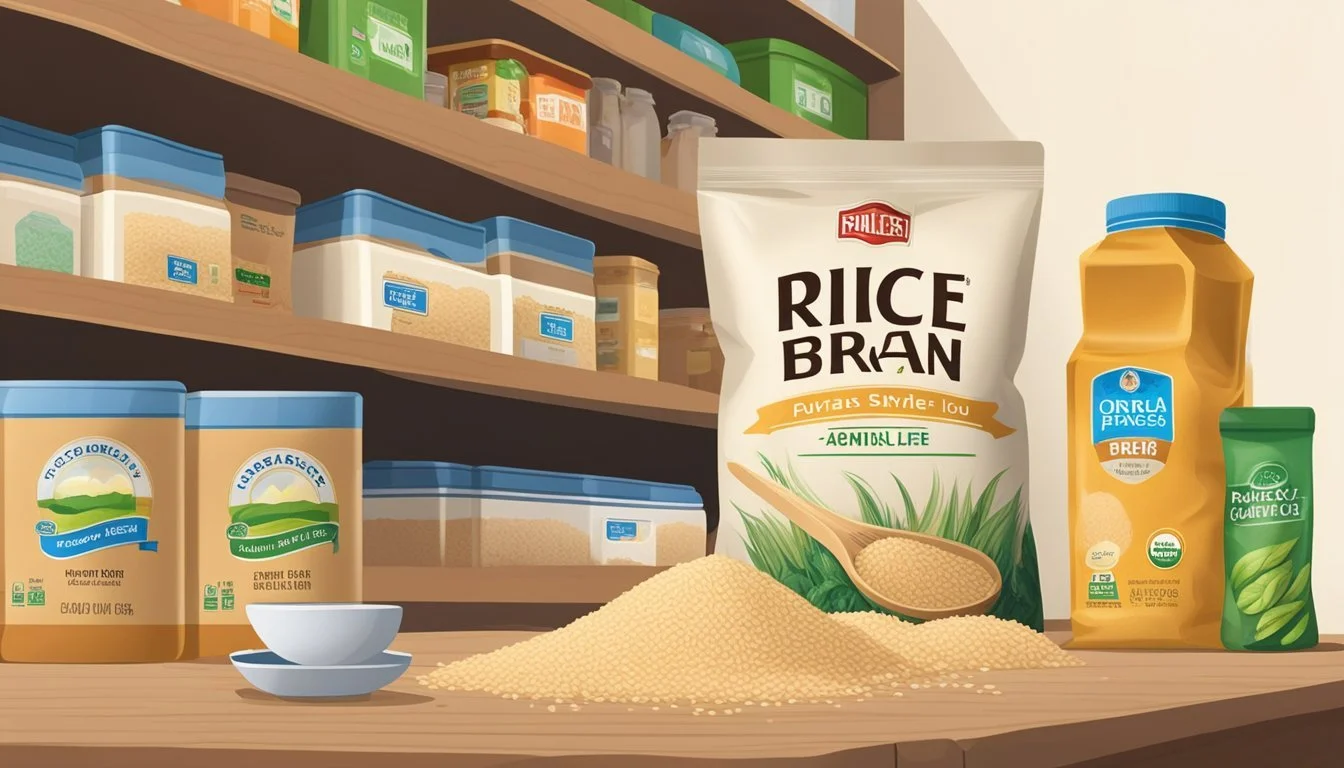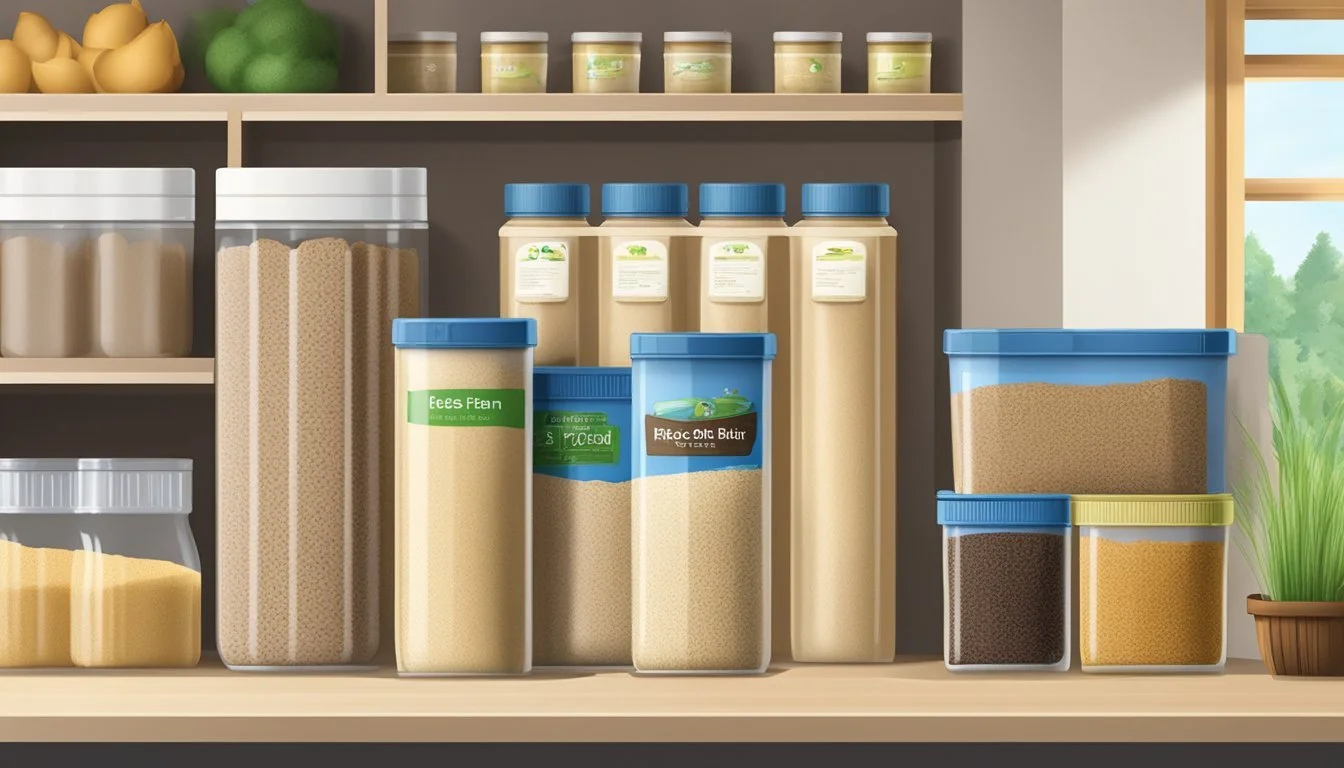How Long Does Rice Bran Last?
Shelf Life and Storage Tips
Rice (What wine goes well with rice?) bran, the nutrient-rich outer layer of the rice kernel, is a byproduct of the rice milling process. Given its rich nutritional profile, it is often used in cooking or as a dietary supplement. However, unlike the more commonly consumed white rice, it has a comparatively shorter shelf life due to its higher oil content. Rice bran's shelf life can be significantly impacted by storage conditions; when kept in appropriate environments, it may last longer before turning rancid.
Understanding the longevity of rice bran is critical for consumers looking to harness its health benefits without the risk of spoilage. Typically, when stored in a cool, dry place, rice bran can last up to a few months. However, refrigeration can prolong its freshness duration. Factors such as exposure to heat, light, or moisture can accelerate the degradation process, potentially leading to spoilage characterized by an off smell, a change in color, or a rancid taste. Consumers should be attentive to these signs as they indicate that the rice bran has passed its prime and should not be consumed.
Understanding Rice Bran
Rice bran is the nutrient-dense outer layer that is removed during the milling process of rice grains. It holds a significant nutritional value and has a diverse range of applications in both food industries and animal feed.
Composition and Nutrients
Rice bran, the layer between the inner white rice grain and the outer hull, is rich in nutrients and bioactive compounds. It contains:
Protein: Essential for building and repairing tissues
Fat: Majorly unsaturated fats including omega-3 fatty acids
Dietary fibers: Soluble and insoluble fibers promote digestive health
Vitamins: Particularly B-vitamins
Minerals: Such as calcium, phosphorus, and potassium
Phytochemicals: Including oryzanols and tocopherols which offer antioxidant properties
The presence of these nutrients makes rice bran a valuable component for a balanced diet. However, the exact composition can vary depending on the type of rice.
Different Types of Rice and Bran
Different types of rice produce brans with varied nutritional profiles. Common types of rice include:
White Rice: The bran and germ are removed leaving mostly the starchy endosperm.
Brown Rice: Only the husk is removed, retaining the germ and bran layers with more nutrients.
Basmati and Jasmine: Aromatic varieties that have different sizes and flavors but also contain bran when unrefined.
Whole Grain: Includes the entire kernel - bran, germ, and endosperm.
Wild Rice (how long does wild rice last?): Not actually rice but a different grain species with its own unique bran.
The bran layer in refined rice is stripped in processing, whereas in whole grains like brown, basmati, jasmine, or wild rice, it is left intact. This layer's stability and shelf life will differ based on rice type and processing method.
Shelf Life of Rice Bran
The longevity of rice bran is influenced by storage conditions and the presence of natural oils which can lead to rancidity. Understanding these factors can help maximize the shelf life.
Factors Affecting Shelf Life
The shelf life of rice bran oil (how long does rice bran oil last?) varies depending on storage conditions. Rice bran should be stored in a cool, dark place to prevent spoilage. Exposure to light, heat, and moisture accelerates the degradation process, while proper sealing and refrigeration can extend its usability.
Temperature: Cooler temperatures extend shelf life.
Light: Minimized light exposure preserves quality.
Moisture: Dry environments reduce spoilage risks.
Rancidity in Rice Bran
Rancidity occurs when the oils within rice bran undergo oxidation. Indicators of rancidity include:
Smell: A distinct, off odor.
Taste: An unpleasant flavor.
Keeping rice bran sealed and away from oxygen sources can help prevent rancidity.
Expiration Date Guidelines
The USDA does not provide specific expiration dates for rice bran oil, but the product's shelf life typically spans from:
Unopened: 1-2 years
Opened: Up to 6 months, with refrigeration potentially increasing this period
Rice bran oils should be used within these timeframes to ensure optimal quality and food safety.
Proper Storage Methods
Proper storage of rice bran is essential to preserve its quality and shelf life. Both uncooked and cooked rice (how long does cooked rice last?) bran require specific methods to maintain their nutrition and prevent spoilage.
Storing Uncooked Rice Bran
Uncooked rice bran should be kept in a cool, dry place such as a pantry, away from direct sunlight to prevent rancidity. It is best stored in airtight containers to protect it from moisture and pests. Oxygen absorbers can be added to the containers to extend freshness.
Best Practices for Cooked Rice
Once cooked, rice bran must be handled with care to prevent foodborne illness. Refrigeration is necessary for cooked rice bran, which should be stored in a sealed container at a temperature below 40°F (5°C). To freeze, wrap the cooked rice tightly with freezer-safe wrap or place it into airtight containers before storing it in the freezer.
Impact of Storage Containers
The longevity of rice bran is greatly impacted by the choice of storage containers. Containers should be airtight, moisture-proof, and made of food-grade materials. Glass or food-safe plastic containers with tight seals are recommended. For added protection, storages can also include oxygen absorbers to minimize oxidation and extend the shelf life of both dry rice and cooked rice when stored appropriately.
Preventing Spoilage and Contamination
Maintaining the quality and safety of rice bran involves proactive steps to deter spoilage and contamination. These measures are fundamental in preventing issues such as mold, pests, and food poisoning.
Detecting Spoilage in Rice Bran
To prevent consuming spoiled rice bran, one should be aware of the signs of spoilage. These typically include:
An off smell that is noticeably different from the nutty scent of fresh rice bran.
A slimy texture or discoloration, indicating that it has gone bad.
Preventing Mold and Pests
Rice bran's susceptibility to mold and pests requires strict storage practices:
Keep it dry: Moisture facilitates mold growth; store rice bran in a dry environment.
Secure packaging: Use airtight containers to prevent oxygen exposure which can grow mold and attract pests.
Store in a cool place: Heat accelerates spoilage, so a cool storage area prolongs shelf life.
Food Safety Considerations
To ensure rice bran is safe for consumption, consider the following:
Contaminant avoidance: Keep rice bran away from sources of contamination such as chemicals or dirty surfaces.
Regular checks: Routinely inspect for signs of spoilage, pests, or mold to prevent the potential of food poisoning.
Proper handling: Ensure clean hands and utensils when using rice bran to avoid introducing contaminants.
Freezing Rice Bran
Freezing can significantly extend the shelf life of rice bran by slowing down the degradation process caused by heat, light, and air exposure. It's an excellent way to preserve its nutritional value and prevent rancidity for an extended period.
Freezing Uncooked Rice Bran
Uncooked rice bran can be frozen to maintain its freshness. To freeze uncooked rice bran:
Transfer the rice bran into airtight containers or heavy-duty freezer bags.
Label the containers or bags with the current date.
Place them in the freezer, ensuring that the temperature is at 0°F (-18°C) or lower.
By freezing, the rice bran's shelf life is prolonged, and the risk of it becoming rancid or mushy is minimized.
Freezing Cooked Rice Bran
For cooked rice products containing rice bran:
Cool the rice down quickly after cooking to reduce the risk of bacterial growth.
Portion the rice into serving sizes to make it easier to defrost only what's needed.
Package the rice into freezer-safe containers or bags.
Seal the packaging tightly to prevent freezer burn.
The rice should retain its quality for several months in the freezer. However, the texture may change and become slightly mushy after thawing and reheating.
Defrosting and Use
When one needs to use frozen rice bran:
Thaw the rice bran in the refrigerator overnight to permit gradual defrosting.
Inspect the rice bran before use; if it has an off odor or appearance, it should not be used.
Rice bran should be used promptly after thawing to maintain its quality. It is important not to refreeze rice bran that has been defrosted to prevent bacterial growth and maintain its integrity.
Alternative Uses and Substitutes
This section explores the variety of substitutes available for rice in different diets and the non-culinary applications of rice that may be overlooked.
Rice Substitutes for Different Diets
For individuals with specific dietary needs or in emergency situations, various substitutes can replace rice to provide essential nutrition and caloric intake. Here are some alternatives:
For Gluten-Free Diets:
Quinoa: A protein-rich seed that cooks like a grain and contains all nine essential amino acids.
Millet: A gluten-free grain that is used around the world as a staple food.
For Low-Carb or Keto Diets:
Cauliflower Rice: Grated cauliflower serves as a low-carb alternative to rice.
Shirataki Rice: Made from the konjac plant, it's a low-calorie and low-carb rice substitute.
For Emergency or Survival Food:
Dehydrated Vegetables: Lightweight and with a long shelf-life, they can be rehydrated and used as a rice alternative.
Freeze-Dried Meats and Legumes: They can be stored for extended periods and serve as a high-protein rice substitute.
Non-Culinary Uses of Rice
Rice and rice by-products have applications beyond the kitchen. These include:
Skin Care:
Rice Bran: Rich in antioxidants, it's used in exfoliants and masks for its skin-soothing properties.
Note: The longevity of rice bran depends on storage conditions and it can quickly go rancid, so non-culinary uses such as in skin care formulations should use fresh, high-quality rice bran.
FAQs and Expert Tips
This section provides targeted answers to common inquiries about rice bran and distilled wisdom on rice preservation methods and usage from seasoned experts. Whether one is dealing with uncooked rice varieties or rice bran oil, understanding storage parameters and recognizing signs of spoilage is crucial to maintaining quality and preventing foodborne illness.
Common Questions About Rice Bran
How long does rice bran last? Unopened rice bran can last for approximately 1 to 2 years if stored in optimal conditions. Once opened or used, its shelf life can be expected to reduce, depending on storage methods.
What affects the shelf life of uncooked rice?
Factors such as moisture, heat, and exposure to air can significantly impact the shelf life of uncooked rice. Long-grain white rice usually lasts longer than brown rice due to lower oil content, thus making it less prone to rancidity.Can pantry pests affect rice bran?
Yes. Rice bran, like other rice products, can attract pantry pests. It is essential to store rice bran in airtight containers to prevent infestation.
Expert Advice on Rice Storage and Use
Storing Uncooked Rice: Experts recommend storing uncooked rice in a cool, dry pantry. White rice may last up to 6 years under ideal conditions, while uncooked brown rice, with its higher oil content, typically lasts 3-6 months. Always use airtight containers to ward off dampness and pests.
Using and Preserving Rice Bran Oil: Rice bran oil should be stored in a cool, dark place to maintain its quality. While it is a shelf-stable product, refrigerating the oil can extend its shelf life up to 9-12 months post-opening.
In summary, whether one is purchasing sushi rice from Amazon or storing a bulk bag of long-grain rice, they must prioritize a storage environment that is devoid of dampness. Containers should seal properly to deter pantry pests and prevent foodborne illnesses. By adhering to these guided practices, one can ensure the longevity and safety of their rice products.








